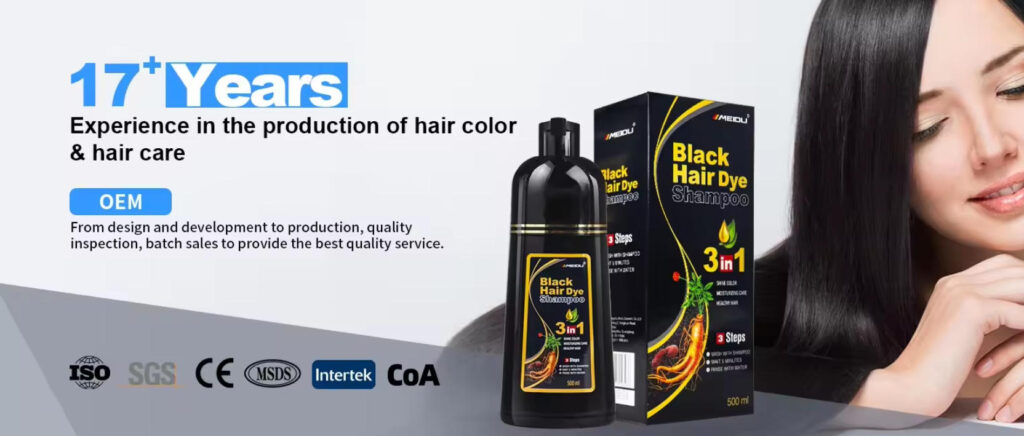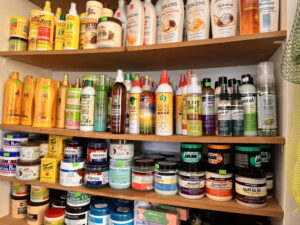Trusted Skin Care Manufacturer | OEM ODM Cosmetic

Why the right manufacturer matters
A good factory reduces risk at three points. First, in the formula, by selecting mild surfactants, the right preservative system, and known safe use levels for fragrance. Second, in production, by following ISO 22716 Good Manufacturing Practices and traceability. Third, in compliance, by building the files and test data you need for your markets.
Under US law, the Modernization of Cosmetics Regulation Act of 2022 (MoCRA) adds facility registration, product listing, safety substantiation, adverse event recordkeeping, and recall authority. Your partner should be registered and ready for audits.
In the EU, Regulation (EC) No 1223/2009 requires a Responsible Person, a Product Information File, and notification in the CPNP before placing product on the market. We structure every project to feed these deliverables.
What we make
We design and scale body care, hair care, and skin care. That includes soaps and washes, scrubs, deodorants, body oils and sprays, shampoos, conditioners, masks, scalp serums, styling, face serums, sunscreens, creams, pimple patches, eye masks, and sheets. Our role is to match feel, efficacy, and safety to your brief, price, and claims.
Formulation framework
We build each formula with a simple map.
Surfactants
For washes and shampoos, we combine primary anionics (e.g., SLES or glutamate) with amphoterics (e.g., CAPB) to balance foam and mildness. We use pH and electrolytes to tune feel. Clear, sulfate free, or low salt systems are all feasible.
Oils and emollients
We mix polar and non polar oils for fast spread or cushion. Esters help with slip. For body oils we choose polarity for the desired afterfeel and the solubility of actives or fragrance.
Humectants
We stack glycerin, sorbitol, propanediol, or hyaluronic acid by need and cost. Levels link back to tack and freeze–thaw behavior.
Functional powders
We use starches, clays, zinc oxide, or silica to cut shine, add slip, or thicken.
Preservatives and chelators
We design to ISO 11930 (challenge test) and ISO 17516 (micro limits). Chelators like sodium phytate or EDTA support broad activity. We test across pH and pack.
Viscosity systems
Acrylates, cellulose gums, and associative thickeners build structure. Electrolyte level and fragrance solubility affect gel clarity.
Fragrance and allergens
We formulate to IFRA 51st Amendment limits by product category and disclose EU fragrance allergens above thresholds. The EU expanded the list of individually labeled allergens in 2023. We keep labels current.
Deodorant actives
Aluminum antiperspirants
Aluminum chlorohydrate reduces sweat and can add antimicrobial effect. Safety has been reviewed by the EU Scientific Committee on Consumer Safety (SCCS). We set pH and solvents to support comfort.
No aluminum options
For odor control, we use zinc ricinoleate to bind malodor molecules, plus absorbents and pH control. Magnesium hydroxide may help manage odor by raising local pH, but very high pH can irritate. We design buffers to manage that risk.
Label and VOC rules for sprays
Aerosol or pump body sprays must meet VOC limits in markets like California and follow flammability and cautionary labeling rules. We select propellants and solvents to comply and test flame projection per 16 CFR 1500.45.
Scrubs and exfoliants
We avoid plastic microbeads in rinse off products. The US banned them in 2015 and the EU adopted a broader microplastics restriction. We use salt, sugar, cellulose, silica, or hydrogenated castor beads instead.
Washes and soaps
Body wash
We target low irritation and easy rinse. We balance anionic and amphoteric surfactants, add polymer conditioners, and keep fragrance within IFRA class limits.
Body bars
Syndet bars bring mildness at balanced pH. Traditional soap bars are higher pH and can be drying; we adjust superfat and chelators to manage feel and scum.
Body oils and sprays
We match oil polarity to target feel. Dry oils favor lower viscosity esters. For sprays, we test flammability and ensure IFRA compliance and solvent stability. VOC and flammability rules guide propellant choice and label statements.
Hair care systems
Cleansers
We tune sulfate based or sulfate free systems to the scalp and hair type. Amphoterics reduce irritation and help viscosity.
Conditioners
We use cationic polymers and quats for slip, with or without silicones. Silicone free routes use cationic cellulose, amidoamines, and oils.
Masks and oils
We choose oils with some penetration potential and add film formers for shine.
Sprays
We confirm propellant and solvent balance. We ensure can compatibility, valve selection, and flame projection compliance.
Scalp care
We protect the scalp barrier and respect the microbiome. We choose gentle surfactants, humectants, and anti dandruff actives per market rules.
Skin care actives
We build serums around clear use levels and pH. For vitamin C we select L ascorbic acid in low pH water or use stable derivatives at neutral pH. For niacinamide we hold pH between 5 and 7 for comfort. For acids we track free acid value. For peptides we protect from metals with chelators and ensure preservative coverage across the full pH and water activity range.
Emulsion systems
For creams we select emulsifiers by HLB and desired feel. Hot–hot or cold process is set by actives and pack. We run stability by heat–cool, freeze–thaw, and centrifuge and monitor viscosity, pH, odor, and color. We use ISO 22716 to control batch records, training, and traceability.
Pimple patches
Hydrocolloid patches absorb exudate. For microdarts or actives we verify raw material status under cosmetic rules and ensure adhesive and backing compatibility. We set claims to cosmetic scope only.
Sunscreen claims
Rules differ by region. In the US, sunscreens are OTC drugs. “Broad Spectrum” needs a critical wavelength of at least 370 nm and an SPF from an in vivo method; the broad spectrum part is an in vitro pass–fail. Labels must follow 21 CFR 201.327.
In the EU, sunscreen is a cosmetic, but you must meet minimum performance. The UVA protection factor should be at least one third of the labeled SPF and a critical wavelength of 370 nm. Many brands use the circled UVA logo to show this. We design to ISO 24444 (SPF) and ISO 24443 (UVA in vitro) to support claims.
Important
We keep sunscreen language consistent with local guidance. We avoid medical claims and give proper warning and direction statements. (
Quality and compliance
GMP
We align with ISO 22716 for production, control, storage, and shipment. FDA notes alignment with parts of ISO 22716 in its cosmetic GMP guidance.
EU files
We prepare the Product Information File and Cosmetic Product Safety Report for your Responsible Person and support CPNP notification.
US MoCRA
We support facility registration and product listing and keep safety substantiation on file.
Fragrance safety
We apply IFRA Standards by product category and provide allergen disclosure per EU rules.
Microbiology and preservation
We set a preservative strategy first, then prove it. We use ISO 11930 for challenge testing and ISO 17516 for finished product limits. We may also use PCPC methods when requested. We design by risk: pack type, water activity, pH, and use pattern.
Snippable checklist
Preservation plan steps
Map water activity, pH, pack, and expected use.
Choose a broad system plus chelator and booster.
Verify by ISO 11930 A or B criteria.
Confirm ISO 17516 limits on pilot and first three lots.
Watch challenge trends and adjust if needed.
Stability and claims support
We run accelerated and real time stability, transport simulation, and pack compatibility. We track viscosity, pH, color, odor, phase, weight loss, and claim endpoints where applicable. We use industry guidelines to shape protocols and adjust to your markets and packs.
Packaging and compatibility
We test for stress cracking, valve performance, wiper contact, and formula loss. We screen for fragrance–plastic interaction and preservative sorption. Aerosols get flame projection tests and clear cautionary statements under US FHSA. VOC classes drive solvent choices in California and other states that follow CARB.
Sustainability choices
We favor recyclable mono material packs where possible, light weighting, and refills. We replace microplastics with mineral or natural options. The EU adopted a broad microplastics restriction; we stay ahead of phase out timelines. We also explore solid and concentrated formats to cut transport impact.
Try Xiangxiang Daily Now!
We Help You Launch New Products, And Continue To Grow. Try Us With 20% Off Your First Order!
OEM and ODM process
Brief
You share target market, benchmarks, claims, pack, and cost. We return a risk map and plan.
Lab
We build 2–4 first pass samples per SKU with notes on feel, viscosity, pH, and scent.
Safety and compliance plan
We map IFRA class, allergen disclosure needs, preservation, micro limits, and market files (EU PIF, CPNP; US MoCRA).
We pilot the chosen version. We set mixing speeds, temperatures, order of addition, and critical control points under ISO 22716.
Testing
We start stability, micro, preservative efficacy, pack compatibility, and, for sunscreens, the required SPF and UVA methods for your markets.
Artwork and claims
We check mandatory elements and claims. In the EU, claims must follow the common criteria and avoid medical language. In the US, sunscreen drug labels follow 21 CFR 201.327.
Production and release
We release against COAs, micro, and spec. We retain samples and keep lot records.
How to choose a manufacturer
A quick test you can use today
Ask for their ISO 22716 procedures and a recent internal audit summary.
Ask how they run challenge tests and which standard they follow.
Ask how they manage IFRA and EU allergen changes in labels.
Ask how they will build your EU PIF or support US MoCRA records.
Ask for a stability plan with checkpoints and stop rules.
Ask for their aerosol flammability and VOC compliance approach if you sell sprays.
What competitors show and what they miss
Many manufacturer sites list categories and low MOQs, and some show private label ranges. Few go deep on GMP, testing standards, and market specific claims. For example, typical pages highlight capability but offer little on ISO 11930 challenge tests, IFRA version tracking, or MoCRA deliverables. We build those into the project plan from day one.
Frequently asked questions
How long does a new product take
Lab to launch often takes 12–20 weeks. Lead time depends on actives, pack lead times, and required tests.
What certifications matter
ISO 22716 GMP is the key manufacturing standard. Your sunscreen needs the right SPF and UVA tests for each market. Fragrance must follow IFRA Standards. EU products need a PIF and CPNP notification. US products must meet MoCRA.
How do you ensure product safety
We design preservation with a risk based approach, verify by ISO 11930, and confirm ISO 17516 limits. We track complaints and adverse events and keep records as MoCRA requires.
Can you make aerosol or pump sprays
Yes. We test flammability and follow FHSA cautionary labeling, and we design to VOC rules, including CARB.
How do you handle fragrance allergens
We label EU allergens above thresholds and keep up with Regulation 2023/1545, which expanded the list.
Is this medical advice
No. This guide covers cosmetic manufacturing and compliance. It is not medical advice.
Work with Xiangxiang Daily
If you want an OEM or ODM partner who brings formula detail, clear test plans, and market ready files, we can help.
Request OEM samples from Xiangxiang Daily · Discuss private label formulas · Get a formulation sheet
Table of Contents
Latest Blog Posts
Check out the latest industry trends and take inspiration from our updated blogs, giving you a fresh insight to help boost your business.



